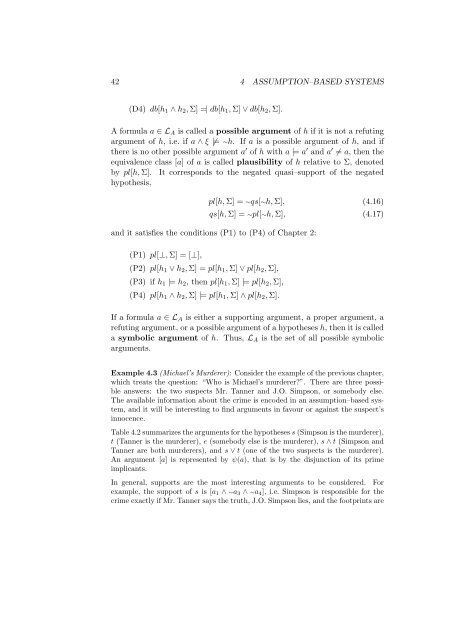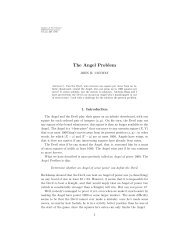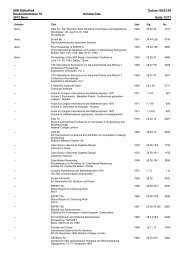Propositional Argumentation Systems and Symbolic Evidence Theory
Propositional Argumentation Systems and Symbolic Evidence Theory
Propositional Argumentation Systems and Symbolic Evidence Theory
You also want an ePaper? Increase the reach of your titles
YUMPU automatically turns print PDFs into web optimized ePapers that Google loves.
42 4 ASSUMPTION–BASED SYSTEMS<br />
(D4) db[h 1 ∧ h 2 , Σ] =| db[h 1 , Σ] ∨ db[h 2 , Σ].<br />
A formula a ∈ L A is called a possible argument of h if it is not a refuting<br />
argument of h, i.e. if a ∧ ξ ̸|= ∼h. If a is a possible argument of h, <strong>and</strong> if<br />
there is no other possible argument a ′ of h with a |= a ′ <strong>and</strong> a ′ ≠ a, then the<br />
equivalence class [a] of a is called plausibility of h relative to Σ, denoted<br />
by pl[h, Σ]. It corresponds to the negated quasi–support of the negated<br />
hypothesis,<br />
pl[h, Σ] = ∼qs[∼h, Σ], (4.16)<br />
qs[h, Σ] = ∼pl[∼h, Σ], (4.17)<br />
<strong>and</strong> it satisfies the conditions (P1) to (P4) of Chapter 2:<br />
(P1) pl[⊥, Σ] = [⊥],<br />
(P2) pl[h 1 ∨ h 2 , Σ] = pl[h 1 , Σ] ∨ pl[h 2 , Σ],<br />
(P3) if h 1 |= h 2 , then pl[h 1 , Σ] |= pl[h 2 , Σ],<br />
(P4) pl[h 1 ∧ h 2 , Σ] |= pl[h 1 , Σ] ∧ pl[h 2 , Σ].<br />
If a formula a ∈ L A is either a supporting argument, a proper argument, a<br />
refuting argument, or a possible argument of a hypotheses h, then it is called<br />
a symbolic argument of h. Thus, L A is the set of all possible symbolic<br />
arguments.<br />
Example 4.3 (Michael’s Murderer): Consider the example of the previous chapter,<br />
which treats the question: “Who is Michael’s murderer?”. There are three possible<br />
answers: the two suspects Mr. Tanner <strong>and</strong> J.O. Simpson, or somebody else.<br />
The available information about the crime is encoded in an assumption–based system,<br />
<strong>and</strong> it will be interesting to find arguments in favour or against the suspect’s<br />
innocence.<br />
Table 4.2 summarizes the arguments for the hypotheses s (Simpson is the murderer),<br />
t (Tanner is the murderer), e (somebody else is the murderer), s ∧ t (Simpson <strong>and</strong><br />
Tanner are both murderers), <strong>and</strong> s ∨ t (one of the two suspects is the murderer).<br />
An argument [a] is represented by ψ(a), that is by the disjunction of its prime<br />
implicants.<br />
In general, supports are the most interesting arguments to be considered. For<br />
example, the support of s is [a 1 ∧ ∼a 3 ∧ ∼a 4 ], i.e. Simpson is responsible for the<br />
crime exactly if Mr. Tanner says the truth, J.O. Simpson lies, <strong>and</strong> the footprints are








